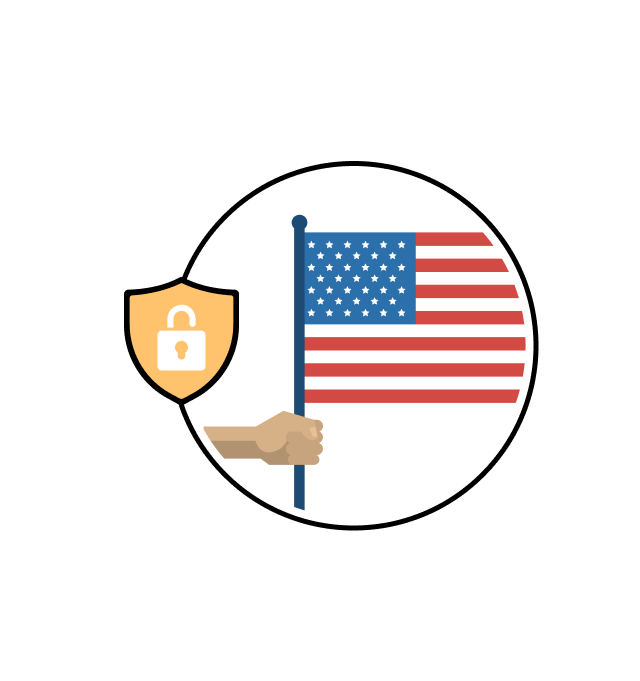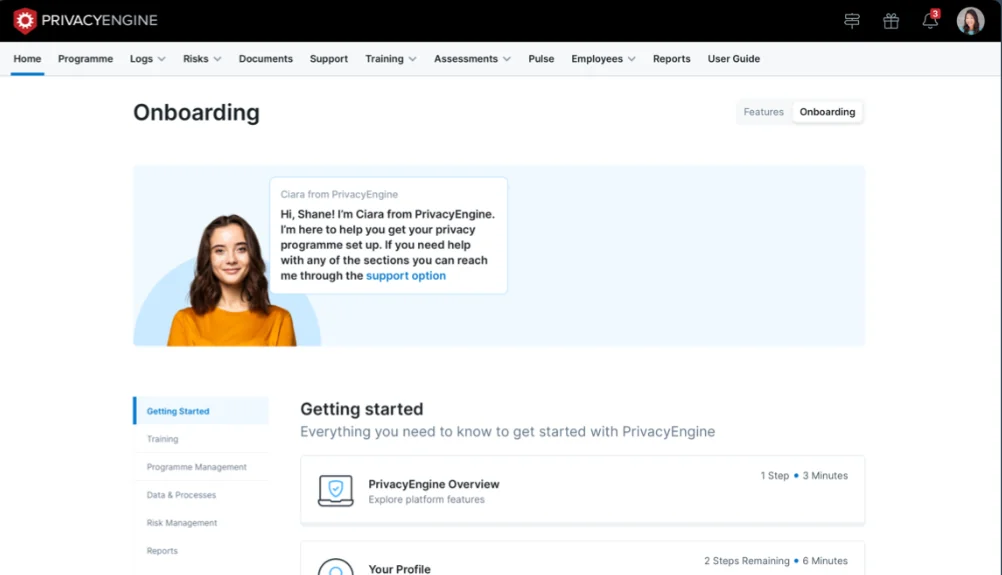In today’s rapidly evolving digital landscape, information security has become a top priority for businesses of all sizes. Organizations must take proactive measures to safeguard sensitive data, protect customer information, and ensure the continuity of their services. One such measure is SOC2 compliance. In this article, we will explore everything you need to know about SOC2 – from its definition and importance to the five trust principles it encompasses, the audit process involved, and the benefits it offers.
Understanding SOC2: An Overview
SOC2, short for Service Organization Control 2, is a framework developed by the American Institute of Certified Public Accountants (AICPA) to guide service providers in determining the effectiveness of their information security controls. It is specifically designed for organizations that store customer data in the cloud or provide various technology-based services. SOC2 compliance ensures that these service providers are meeting industry-standard security, availability, processing integrity, confidentiality, and privacy requirements.
What is SOC2?
SOC2 is a set of standards and guidelines that outline the criteria for evaluating and reporting on the controls and processes implemented by service organizations. It focuses on the security, availability, processing integrity, confidentiality, and privacy of customer data. By complying with SOC2 standards, service providers demonstrate their commitment to protecting their customers’ sensitive information.
When it comes to evaluating the effectiveness of information security controls, SOC2 takes a comprehensive approach. It assesses not only the technical aspects of security but also the policies, procedures, and organizational structure in place to support information security efforts. This holistic evaluation ensures that service providers are not only implementing the right technological measures but also fostering a culture of security within their organization.
One of the key components of SOC2 is the concept of trust services criteria. These criteria define the principles and controls that service organizations need to meet to achieve SOC2 compliance. The five trust service criteria are:
- Security: This criterion focuses on the protection of the system against unauthorized access, both physical and logical. It includes measures such as access controls, encryption, and vulnerability management.
- Availability: Availability refers to the accessibility of the system and the services it provides. This criterion assesses the organization’s ability to ensure uninterrupted access to its services and the measures in place to prevent and respond to service disruptions.
- Processing Integrity: Processing integrity evaluates the completeness, accuracy, timeliness, and validity of data processing. It ensures that the organization’s systems are reliable and perform their intended functions correctly.
- Confidentiality: Confidentiality focuses on protecting sensitive information from unauthorized disclosure. It includes measures such as data classification, encryption, and access controls to prevent unauthorized access to sensitive data.
- Privacy: Privacy criteria assess the organization’s practices and controls related to the collection, use, retention, disclosure, and disposal of personal information. It ensures compliance with applicable privacy laws and regulations.
The Importance of SOC2 in Business
As cyber threats continue to increase in frequency and sophistication, organizations must ensure the security of their information systems. SOC2 compliance provides a robust framework to achieve this goal. By implementing SOC2 controls, businesses can demonstrate to their customers, partners, and stakeholders that they have taken the necessary steps to protect their data and maintain the security and privacy of their services.
Moreover, SOC2 compliance is not just about meeting regulatory requirements; it also offers numerous business benefits. Achieving SOC2 compliance can enhance an organization’s reputation and credibility in the marketplace. It assures customers that their data is in safe hands and that the organization has implemented industry-standard security measures.
Furthermore, SOC2 compliance can give service providers a competitive edge. In today’s digital landscape, customers are becoming increasingly concerned about the security and privacy of their data. By obtaining SOC2 compliance, organizations can differentiate themselves from their competitors and attract customers who prioritize data protection.
Additionally, SOC2 compliance can streamline internal processes and improve operational efficiency. It requires organizations to establish and maintain robust information security policies and procedures, which can help identify and mitigate risks. By implementing these controls, organizations can reduce the likelihood of security incidents and their associated costs.
In conclusion, SOC2 compliance is essential for service organizations that handle customer data in the cloud or provide technology-based services. It ensures that these organizations meet industry-standard security, availability, processing integrity, confidentiality, and privacy requirements. By complying with SOC2 standards, organizations can demonstrate their commitment to protecting sensitive information and gain a competitive advantage in the market.
The Five Trust Principles of SOC2
SOC2 compliance revolves around five core trust principles. Let’s take a closer look at each one:
1. Security
Security is the cornerstone of SOC2 compliance. It focuses on protecting customer data from unauthorized access, both physically and electronically. Service providers must have robust security measures in place, such as firewalls, encryption protocols, access controls, and intrusion detection systems, to mitigate the risk of data breaches.
When it comes to physical security, service providers must ensure that their data centers and facilities are secure from unauthorized entry. This includes implementing measures such as biometric access controls, video surveillance, and 24/7 security personnel. By implementing these physical security measures, service providers can prevent unauthorized individuals from gaining access to sensitive customer data.
In addition to physical security, electronic security measures are equally important. Service providers must implement firewalls to protect their systems from external threats and encrypt sensitive data to ensure its confidentiality. Access controls should be in place to restrict access to customer data to only authorized individuals. Intrusion detection systems can help detect any unauthorized attempts to access or manipulate data, allowing for a timely response to potential security breaches.
2. Availability
The availability principle ensures that services are accessible and operational for users when needed. Service providers must have proper redundancy, disaster recovery plans, and system monitoring mechanisms in place to prevent prolonged outages or service disruptions. By maintaining high availability, organizations can minimize the impact of any potential service interruptions on their customers.
Redundancy is a key aspect of ensuring availability. Service providers should have redundant systems and infrastructure in place to minimize the impact of any single point of failure. This can include redundant servers, network connections, and power supplies. By having redundant systems, service providers can ensure that even if one component fails, the service remains operational.
Disaster recovery plans are also crucial for maintaining availability. These plans outline the steps to be taken in the event of a disaster, such as a natural disaster or a cyber attack, to quickly restore services and minimize downtime. Service providers should regularly test and update their disaster recovery plans to ensure their effectiveness.
System monitoring mechanisms play a vital role in maintaining availability. By continuously monitoring the performance and health of their systems, service providers can proactively identify and address any potential issues before they escalate into major outages. This can include monitoring network traffic, server performance, and application availability.
3. Processing Integrity
Processing integrity focuses on the accuracy, completeness, and validity of data throughout its lifecycle. Service providers must ensure that their systems and processes are designed to process data accurately and efficiently. This includes measures to prevent unauthorized changes, errors, or omissions that could impact the integrity of the data.
One way service providers ensure processing integrity is through the use of data validation and verification mechanisms. These mechanisms check the accuracy and completeness of data before it is processed or stored. By implementing these mechanisms, service providers can minimize the risk of processing incorrect or incomplete data, which could lead to erroneous results or decisions.
Data integrity controls are also essential for maintaining processing integrity. These controls ensure that data remains unchanged and uncorrupted throughout its lifecycle. Service providers can implement measures such as data encryption, digital signatures, and audit trails to protect data integrity. These controls provide assurance that data has not been tampered with or altered in an unauthorized manner.
4. Confidentiality
Confidentiality ensures that customer information remains protected from unauthorized disclosure or use. Service providers must have appropriate controls in place to safeguard sensitive data, such as encryption, access controls, and data classification policies. Implementing strong confidentiality measures is crucial to maintaining customer trust and preventing data breaches.
Data encryption is a fundamental confidentiality measure. Service providers should encrypt sensitive data both at rest and in transit to protect it from unauthorized access. Encryption ensures that even if data is intercepted or stolen, it remains unreadable and unusable without the encryption keys.
Access controls are another critical aspect of maintaining confidentiality. Service providers should implement role-based access controls to ensure that only authorized individuals have access to sensitive customer data. This can include user authentication mechanisms, such as passwords or multi-factor authentication, and granular access permissions based on job roles and responsibilities.
Data classification policies help service providers identify and categorize different types of data based on their sensitivity. By classifying data, service providers can apply appropriate confidentiality controls based on the level of sensitivity. For example, highly sensitive data may require additional encryption or access restrictions compared to less sensitive data.
5. Privacy
Privacy deals with the collection, use, retention, and disposal of personal information in accordance with applicable privacy regulations. Service providers must establish policies and procedures to address privacy risks, obtain consent for data collection, and provide transparency regarding data handling practices. Protecting customer privacy is a critical aspect of SOC2 compliance.
One key aspect of privacy is obtaining informed consent from individuals before collecting their personal information. Service providers should clearly communicate the purpose of data collection, the types of data being collected, and how the data will be used. Individuals should have the option to provide or withhold consent based on this information.
Data retention and disposal policies are also important for privacy. Service providers should establish guidelines for how long personal information will be retained and when it will be securely disposed of. By implementing these policies, service providers can ensure that personal information is not retained for longer than necessary and is securely disposed of when no longer needed.
Transparency is crucial for maintaining privacy. Service providers should provide clear and concise privacy policies that outline their data handling practices. These policies should be easily accessible to individuals and should clearly state how personal information is collected, used, and shared. By being transparent, service providers can build trust with their customers and demonstrate their commitment to protecting privacy.
The SOC2 Audit Process
For service providers seeking SOC2 compliance, undergoing a thorough audit process is imperative. This process involves the examination of internal controls, policies, and procedures to assess the organization’s adherence to the trust principles outlined in SOC2. Let’s take a closer look at the key stages of the SOC2 audit process:
1. Preparing for a SOC2 Audit
Prior to the audit, service providers must identify the scope of the audit, assess existing controls, and address any gaps or deficiencies in their systems. This includes conducting a risk assessment, documenting control objectives, and implementing necessary controls to mitigate identified risks.
During the preparation phase, service providers often engage with SOC2 experts who provide guidance on the best practices and requirements for achieving compliance. These experts help organizations understand the specific trust principles that need to be addressed and assist in developing a comprehensive roadmap for the audit process.
Additionally, service providers may need to make adjustments to their infrastructure and systems to ensure they meet the necessary security standards. This could involve implementing encryption protocols, enhancing network security measures, or strengthening access controls.
2. Understanding the SOC2 Report
During the audit, an independent auditor evaluates the effectiveness of the organization’s controls and processes. Upon completion, the auditor issues a SOC2 report detailing the findings. There are two types of SOC2 reports: Type I focuses on the design of controls, while Type II assesses the operating effectiveness over a specified period.
Once the SOC2 report is received, service providers must thoroughly review and understand the findings. The report provides valuable insights into the strengths and weaknesses of the organization’s controls and processes, allowing them to identify areas for improvement.
Service providers can leverage the SOC2 report to demonstrate their commitment to security and compliance to their clients and stakeholders. It serves as a valuable assurance tool, showcasing the organization’s dedication to protecting customer data and maintaining a secure environment.
Based on the recommendations and observations outlined in the SOC2 report, service providers can develop and implement remediation plans to address any identified deficiencies. This may involve revising policies, enhancing training programs, or investing in new technologies to strengthen their control environment.
Furthermore, service providers should view the SOC2 audit process as an ongoing commitment to security and compliance. Regularly reviewing and updating controls, conducting internal audits, and staying up to date with industry best practices are essential for maintaining SOC2 compliance in the long run.
In conclusion, the SOC2 audit process is a comprehensive evaluation that helps service providers ensure the effectiveness of their controls and processes. By diligently preparing for the audit and leveraging the insights provided in the SOC2 report, organizations can enhance their security posture and gain the trust of their clients and stakeholders.
Benefits of SOC2 Compliance
Organizations that achieve SOC2 compliance can enjoy numerous benefits that go beyond meeting regulatory requirements. Let’s explore some of the advantages:
Enhanced Data Protection
SOC2 compliance ensures that comprehensive security measures are in place to protect customer data. By implementing industry-standard controls, organizations can significantly reduce the risk of data breaches, unauthorized access, and other cyber threats. This, in turn, helps to build and maintain trust among customers and partners.
Increased Customer Trust
By demonstrating SOC2 compliance, organizations signal their commitment to safeguarding customer data and maintaining the integrity and availability of their services. This instills confidence in customers, assuring them that their sensitive information is secure and protected. Building a reputation for strong data security practices can be a differentiating factor in a competitive market.
In conclusion, SOC2 compliance is an essential component of a robust information security program for organizations providing technology-based services. By adhering to the five trust principles of SOC2 and successfully undergoing the audit process, service providers can enhance data protection, increase customer trust, and gain a competitive edge in today’s data-driven business landscape.
Learn more. Schedule your FREE Consultation!




